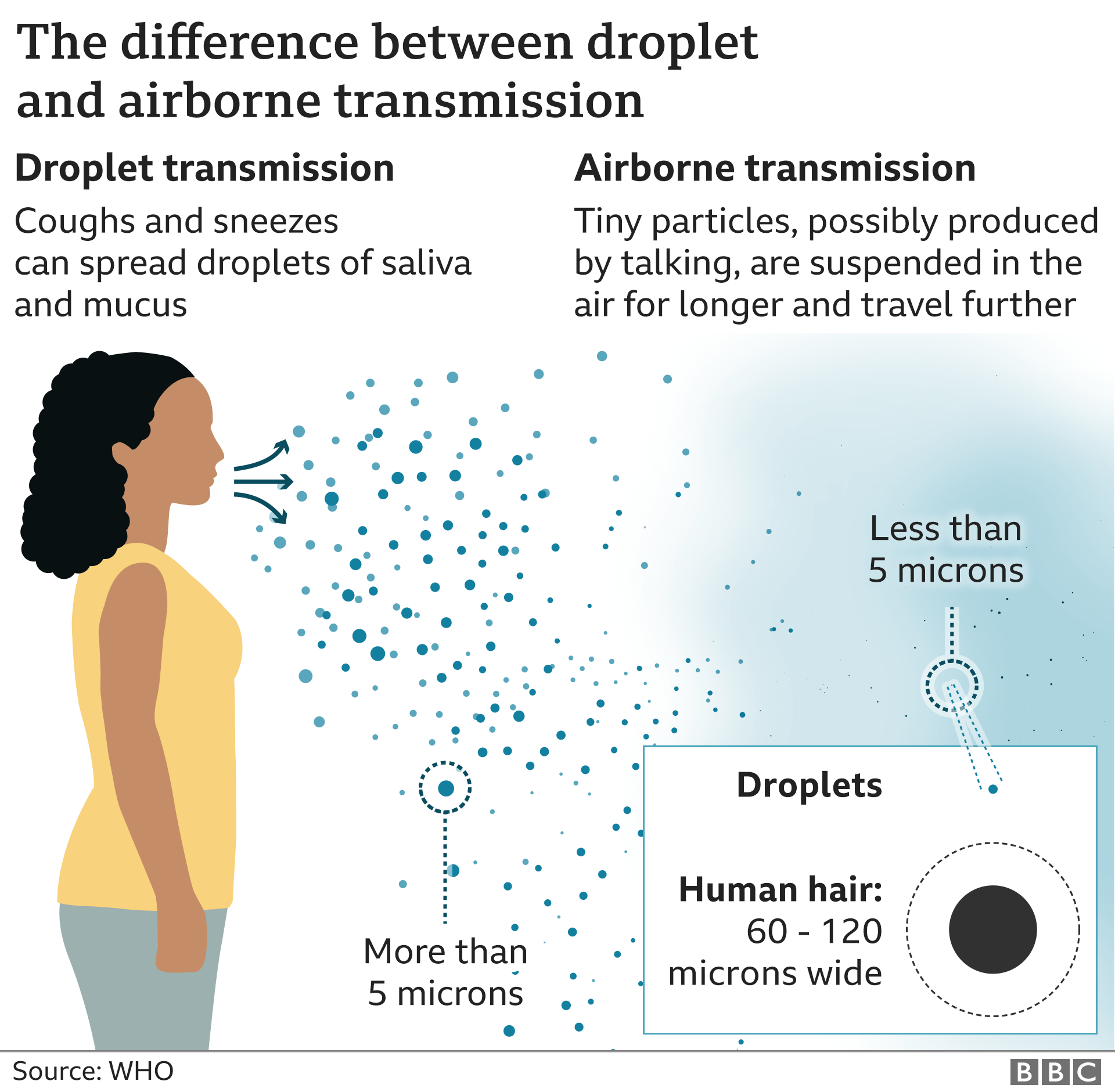Is Coronavirus Airborne Or Aerosolized
Most researchers now agree that the coronavirus is mostly transmitted through large droplets that quickly sink to the floor and through much smaller ones called aerosols that. The germ that causes Covid-19 may be responsible for a terrifying public-health disaster but hallelujah thank the lord at least it isnt airborne.

A Mathematical Framework For Estimating Risk Of Airborne Transmission Of Covid 19 With Application To Face Mask Use And Social Distancing Physics Of Fluids Vol 32 No 10
The coronavirus which causes the respiratory.

Is coronavirus airborne or aerosolized. For most pathogens this is a yes-no scenario. Measles is airborne and dangerously so. These droplets are larger than 5 micrometres μm in diameter and dont tend to travel more than 1-2m before succumbing to.
The half-life of viruses in the aerosol is 11 h approximately. Some scientists have doubted the aerosol route because covid-19 does not appear as transmissible as say measles. The weight of the evidence suggests that the new coronavirus can exist as an aerosol a physics term meaning a liquid or solid the virus suspended in a gas like air only under very limited.
The droplets or aerosol particles vary across a wide range of sizes from visible to microscopic. Generally these studies suggest that COVID-19 patients may produce aerosols with reproducible capable intact virions in the cell culture. But much remains unknown about whether the aerosolized virus is infectious and what.
The World Health Organization recently admitted that Coronavirus is airborne and has updated its public health guidance with the following statement on how the SARS-CoV-2 virus is. New studies hint that the coronavirus may be evolving to become more airborne The virus appears to spread through the air but masks reduce the amount of infectious virus A researcher demonstrates. Sneezing and coughing generally produce larger particles of fluid.
Consequently many researchers have paid attention to the airborne transmission directly by virus-laden droplets and aerosols. Health officials say COVID-19 spreads by three main ways. Is covid-19 airborne.
However airborne or aerosolized transmission of the virus has been proposed as a source of infection almost since the inception of the COVID pandemic. Though there may be a chance of the novel coronavirus wafting in ambient air its not unsafe to open a window or go outside. Canada has updated its guidelines on how COVID-19 spreads to include the risk of aerosol transmission for the first time long after other countries and.
And we have good evidence that from 20 to up to 50 of individuals infected with COVID-19 are asymptomatic and generally continue to be involved in social activities leading to airborne transmission. These particles are lighter smaller and can float. These data have been used to develop a predictive model to estimate virus decay in aerosols under a limited range of environmental conditions.
Survival of aerosolized coronavirus in the ambient air An inactivation of airborne pathogenic Middle East Respiratory Syndrome MERS-CoV virus was. The novel coronavirus SARS-CoV-2 can survive in the air for several hours in fine particles known as aerosols according to preliminary research. A handful of studies suggest the new coronavirus SARS-CoV-2 can exist as an aerosol in health care settings.
Splashes and sprays. 5 But others point to cases of covid-19 transmission where airborne spread appears to be the only explanation behind multiple onward infections. Virus-laden globs of saliva or mucus that are propelled from an infected persons nose or mouth when they cough sneeze talk or sing.
The scientific consensus is that the coronavirus is spread mostly through respiratory droplets. HIV too delicate to survive outside the body is not airborne. Breathing in small virus-containing droplets and particles that have been exhaled by an infected person.
Traditionally droplets are defined as large 5 microns aqueous bodies. Breathing in air when close to an infected person who is exhaling small droplets and particles that contain the virus. Increased temperature and relative humidity cause a minimal increase in SARS-CoV-2 decay but the addition of simulated sunlight causes rapid decay of the virus in aerosol.
COVID-19 is spread in three main ways. Having these small droplets and particles that contain virus land on the eyes nose or mouth especially through splashes and sprays like a cough or sneeze. Aerosols could stay aloft for minutes or hours in poorly ventilated indoor areas thus causing possible transmission of the coronavirus.
Increasingly the evidence is that respiratory virus transmission including seasonal flu and COVID-19 are due to aerosols we generate. However the novelty of this viral outbreak limits the prima facie evidence to determine the potential transmission routes and thus it is assumed that SARS-CoV-2 also spreads as the other human coronaviruses CDC 2020a. The Goldberg drum is used to hold airborne aerosols and particles and measure the stability of the infectious virus.
Having these small droplets and particles land on the eyes nose or mouth. By comparison to droplets aerosolized particles are infinitesimal. People who are infected with COVID can release particles and droplets of respiratory fluids that contain the SARS CoV-2 virus into the air when they exhale eg quiet breathing speaking singing exercise coughing sneezing.
This can happen when an infectious person coughs or sneezes for example. Avoiding crowds and wearing masks could greatly help to reduce the spread of airborne COVID-19 particles.

Airborne Transmission Of Respiratory Viruses

Coronavirus Who Rethinking How Covid 19 Spreads In Air Bbc News

Covid 19 Is Spread By Aerosols Airborne An Evidence Review First10em

Identifying Airborne Transmission As The Dominant Route For The Spread Of Covid 19 Pnas
Posting Komentar untuk "Is Coronavirus Airborne Or Aerosolized"